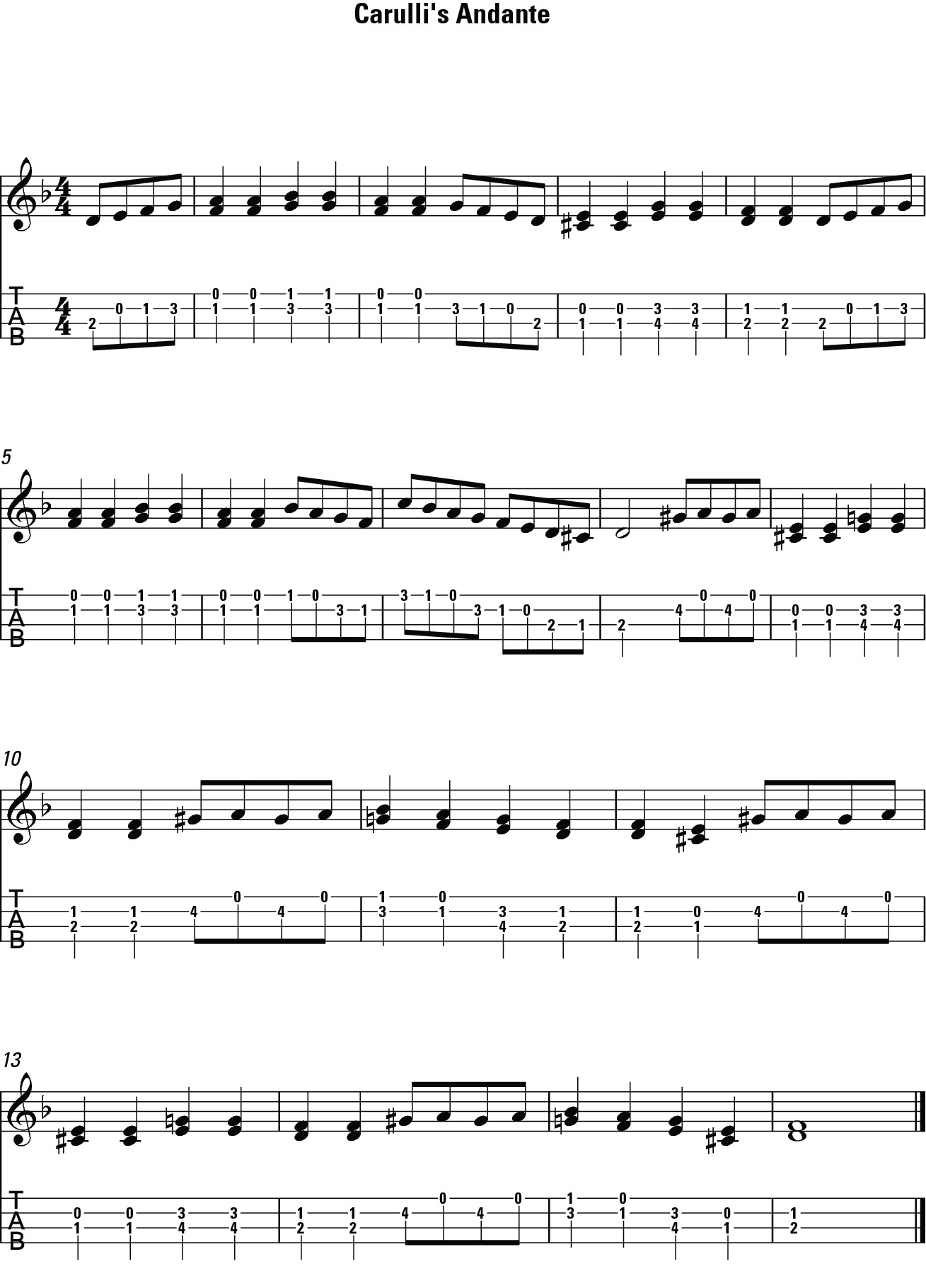Ukulele For Dummies (62 page)
Read Ukulele For Dummies Online
Authors: Alistair Wood

Figure 16-3:
Tab for Brahms's âLullaby'.
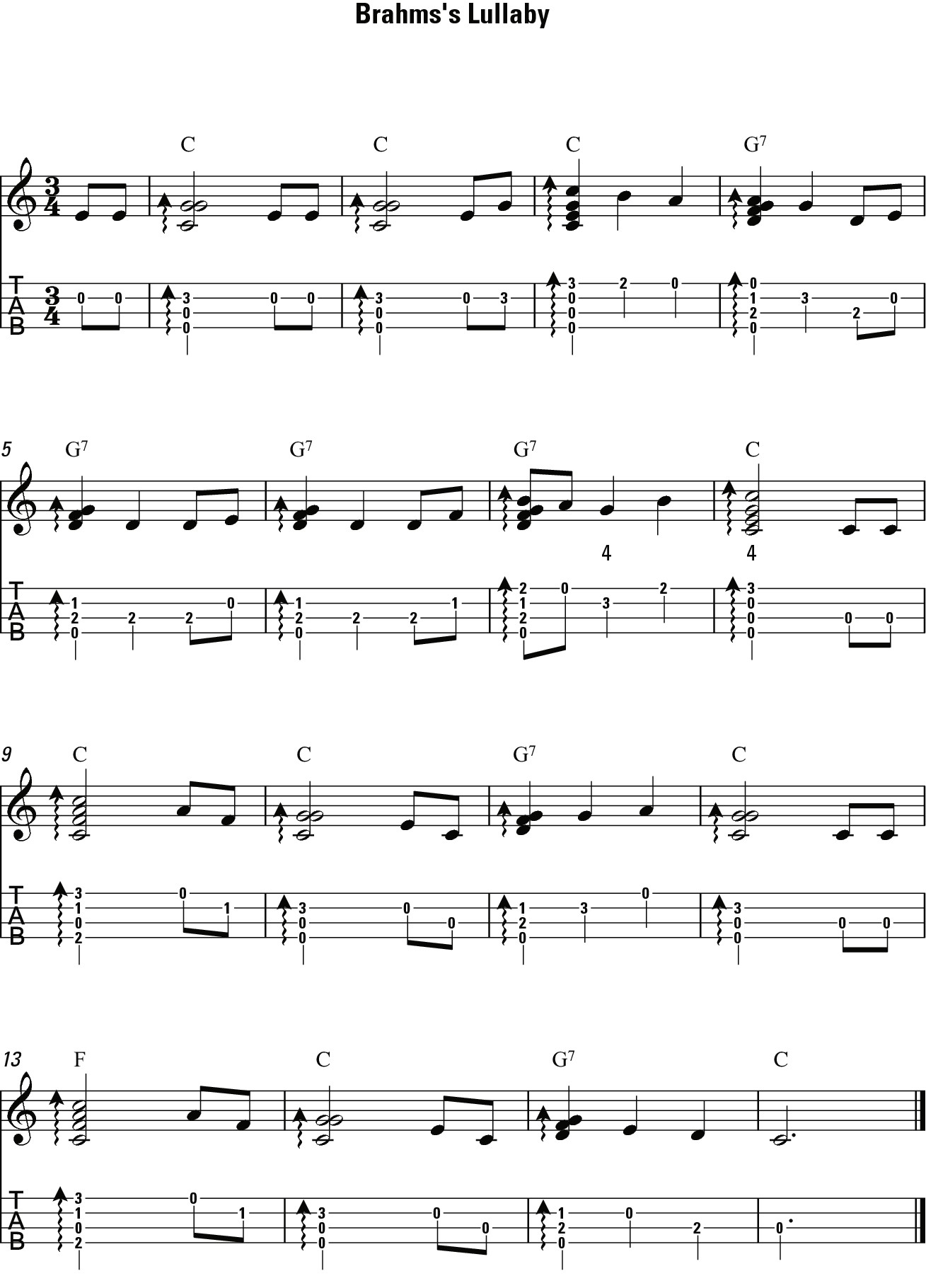
Figure 16-4:
Tab for âGreen-sleeves'.
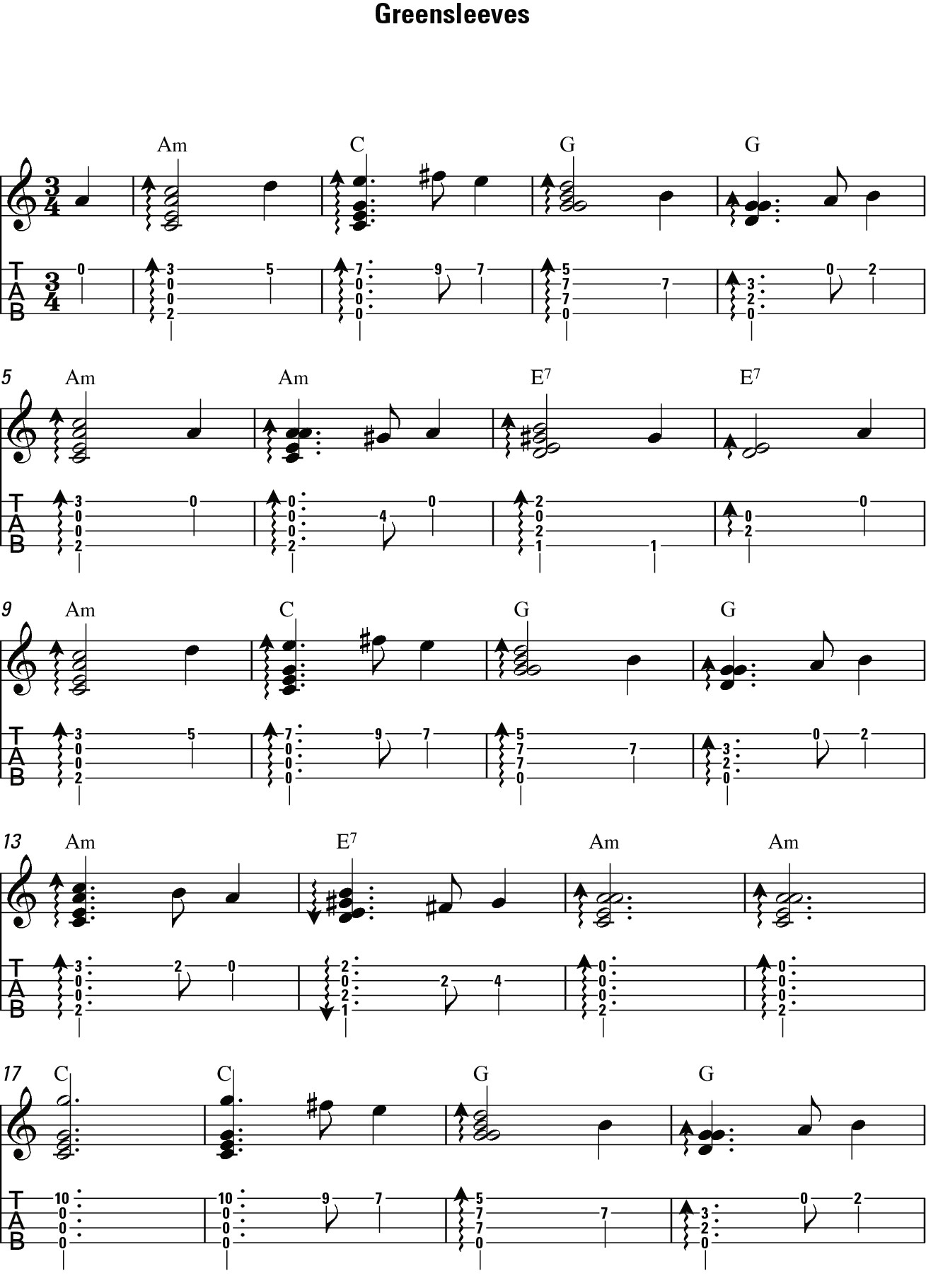
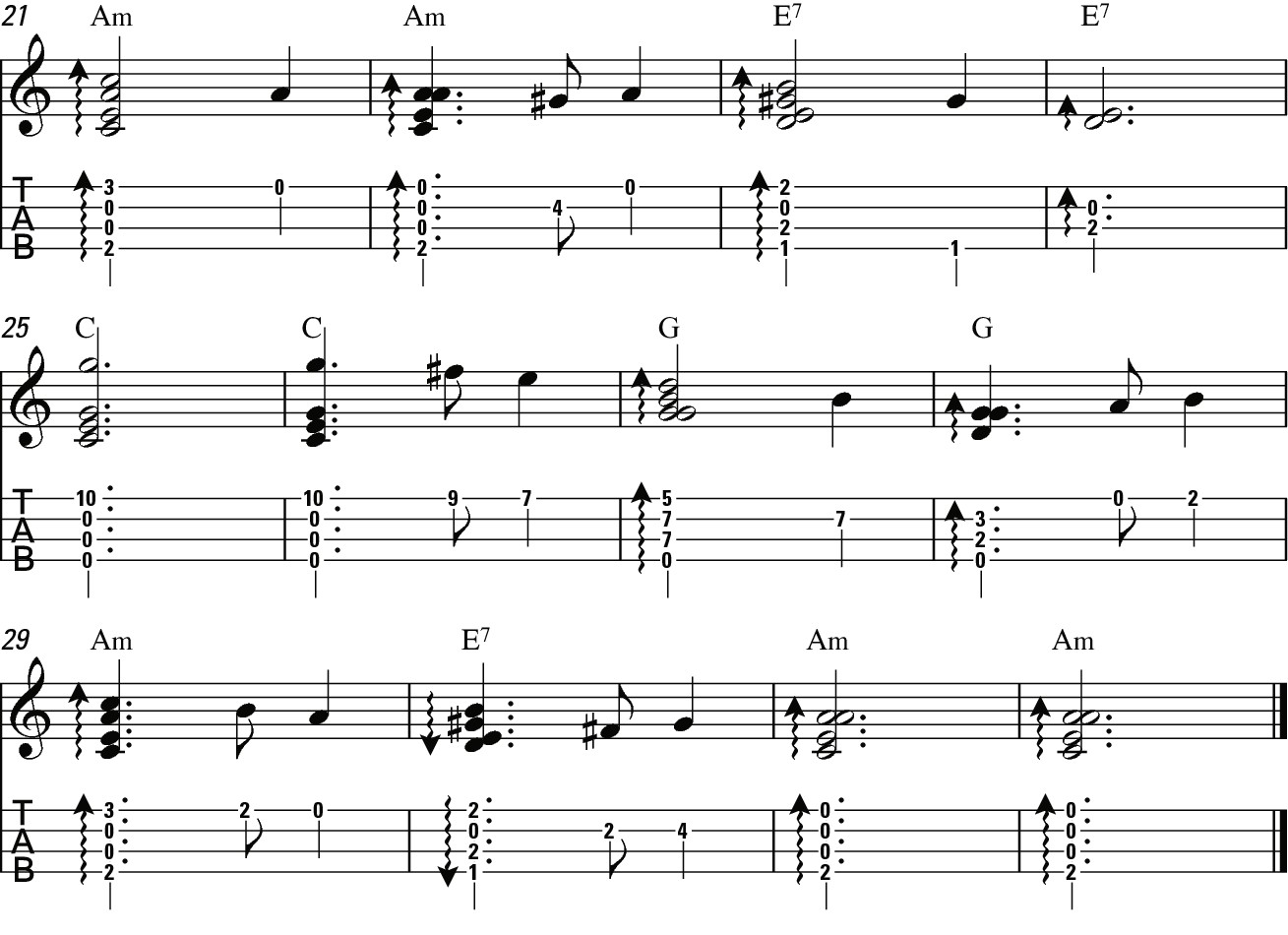
First, this piece makes use of notes farther up the uke's neck, which means a few big jumps in the positioning of your fingers. âGreensleeves' is a slow piece anyway, but don't be afraid of practising it even more slowly; make sure that you focus on playing slow enough that the large jumps don't stop the flow of the music. When you can play it smoothly at a slow tempo, increasing speed is relatively easy.
The second thing to watch out for is the up-strum in bars 13 and 30. Here, instead of strumming down with your thumb, you need to strum up with your index finger. When you're playing in this way, the ear interprets the last note you hit as the melody note. Earlier in the piece the last note was played on the E- or A-strings, but here it's on the g-string, and so that needs to be the last string played.
 Also in bars 13 and 30, the melody notes are hard to play while holding the E7 chord. So you can break the rule about letting the chord ring through the whole bar and release the chord in order to play these notes.
Also in bars 13 and 30, the melody notes are hard to play while holding the E7 chord. So you can break the rule about letting the chord ring through the whole bar and release the chord in order to play these notes.
Picking the Classics â Classical Guitar Pieces for Ukulele
 Classical guitar tunes tend to transfer well to the ukulele. Quite often they contain picking patterns and
Classical guitar tunes tend to transfer well to the ukulele. Quite often they contain picking patterns and
arpeggiated
chords (chords played one note at a time). The most famous example is âRomanza' (also known as âSpanish Romance'), which is shown in Figure 16-5 (Track 94).
 Here's a really simple way to transfer guitar pieces to ukulele: just play the tab for the top three guitar strings on the top three strings of the ukulele. So, for example, if the guitar tab tells you to play the top string at the third fret, play the top string of your ukulele at the third fret. The top three strings of a guitar have the same relative tuning as the top three of the ukulele.
Here's a really simple way to transfer guitar pieces to ukulele: just play the tab for the top three guitar strings on the top three strings of the ukulele. So, for example, if the guitar tab tells you to play the top string at the third fret, play the top string of your ukulele at the third fret. The top three strings of a guitar have the same relative tuning as the top three of the ukulele.
This technique, however, doesn't work perfectly for every piece. One common problem is the lack of bass notes. To overcome this difficulty for âRomanza', I add an A minor chord at the beginning. The tune is in the key of A minor and playing the chord at the beginning sets this up for the listener for the entire piece.
This tune uses three fingers â middle (M), index (I) and thumb (T) â on the A-, E- and C-strings, respectively. The picking pattern is as follows:
M I T M I T M I
The A-string of this piece carries the melody while the E- and C-strings provide backing.
 Give the A-string an extra-strong pick so that the melody pops out.
Give the A-string an extra-strong pick so that the melody pops out.
Here are a couple of bits of fingering to look out for. In bar 7, make sure that you use your little finger to play the note at the eighth fret so you're ready for the next bar; and in bars 10 and 11, use the tip of your index finger to play both the E- and A-strings. Doing so allows you to play the big stretch up to the eleventh fret.
 One of the most famous composers for guitar was Ferdinando Carulli (a 19th-century Italian composer who wrote over 400 pieces for the guitar). Figure 16-6 is an arrangement for ukulele of his âAndante' (Track 95).
One of the most famous composers for guitar was Ferdinando Carulli (a 19th-century Italian composer who wrote over 400 pieces for the guitar). Figure 16-6 is an arrangement for ukulele of his âAndante' (Track 95).
This arrangement uses the same technique of transferring directly from guitar to ukulele as used to play âRomanza'. Again, you lose the bass notes but that doesn't stop the tune being rewarding to play.
 Two elements are important to note in this piece: single note runs (picked using the ârunning man' alternate picking technique that I describe in Chapter 10) and the pairs of notes (picked with index and middle fingers).
Two elements are important to note in this piece: single note runs (picked using the ârunning man' alternate picking technique that I describe in Chapter 10) and the pairs of notes (picked with index and middle fingers).
Figure 16-5:
Tab for âRomanza'.
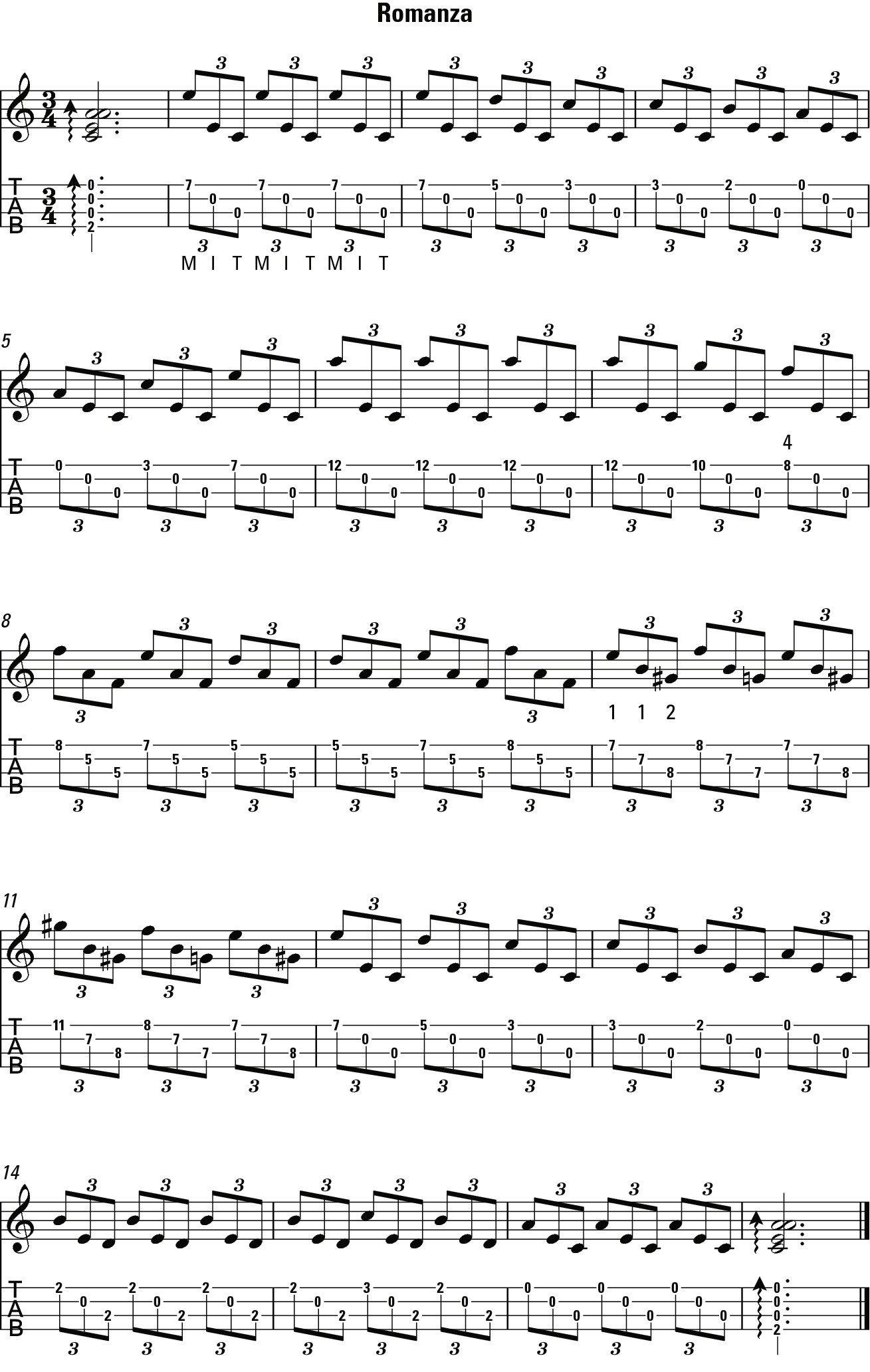
Figure 16-6:
Tab for Carulli's âAndante'.
